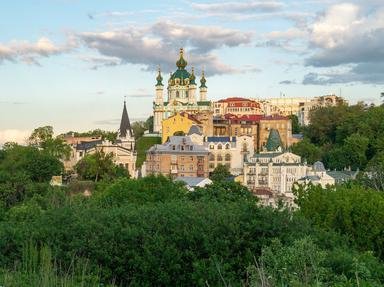Quiz Answer Key and Fun Facts
1. In 2011, the 44,000 year-old remains of a house made of mammoth bones was found in Ukraine. Which group, who mostly appear to have lived in caves, has been credited with building the house?
2. There is evidence that some of the first metalworkers lived in settlements in Ukraine. What metal did they use for tools and weapons?
3. Beginning during the early Bronze Age, people from Ukraine to southern Russia, Central Asia, and beyond, began to carve stone stelae, which are believed to have been used for which of the following purposes?
4. By 3300-2600 BC, people living in Ukraine learned to make bronze. They are known as the Pit Grave culture, or by which other name?
5. Although the exact details have not yet been uncovered, scientists today believe which animal was domesticated in Ukraine and nearby Kazakhstan about 3500 BC?
6. The ancient Greeks colonized extensively in the Black Sea region. Which of the following was NOT a Greek colony there?
7. Which of the following parts of Ukraine was partially controlled by the Roman Empire from 47 BC-340 AD?
8. Which tribe of Goths settled in Ukraine sometime in the third or fourth century AD, a few years before their invasions forced the co-emperor to leave Rome?
9. Which group of invaders swept across Ukraine in the 370s, leaving behind a path of destruction?
10. What was the area that comprises Ukraine today called from approximately 750-250 BC?
Source: Author
ponycargirl
This quiz was reviewed by FunTrivia editor
trident before going online.
Any errors found in FunTrivia content are routinely corrected through our feedback system.
